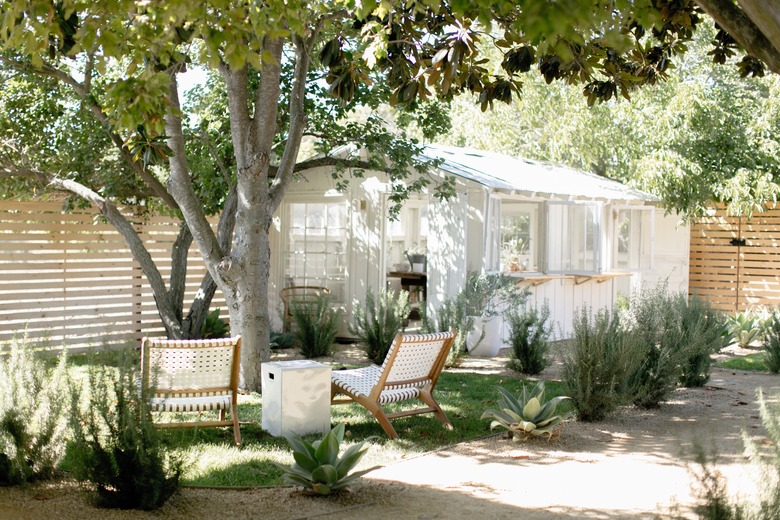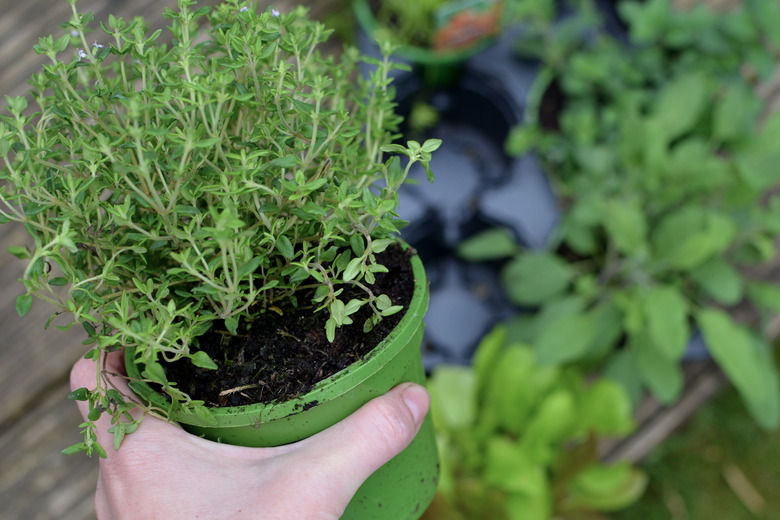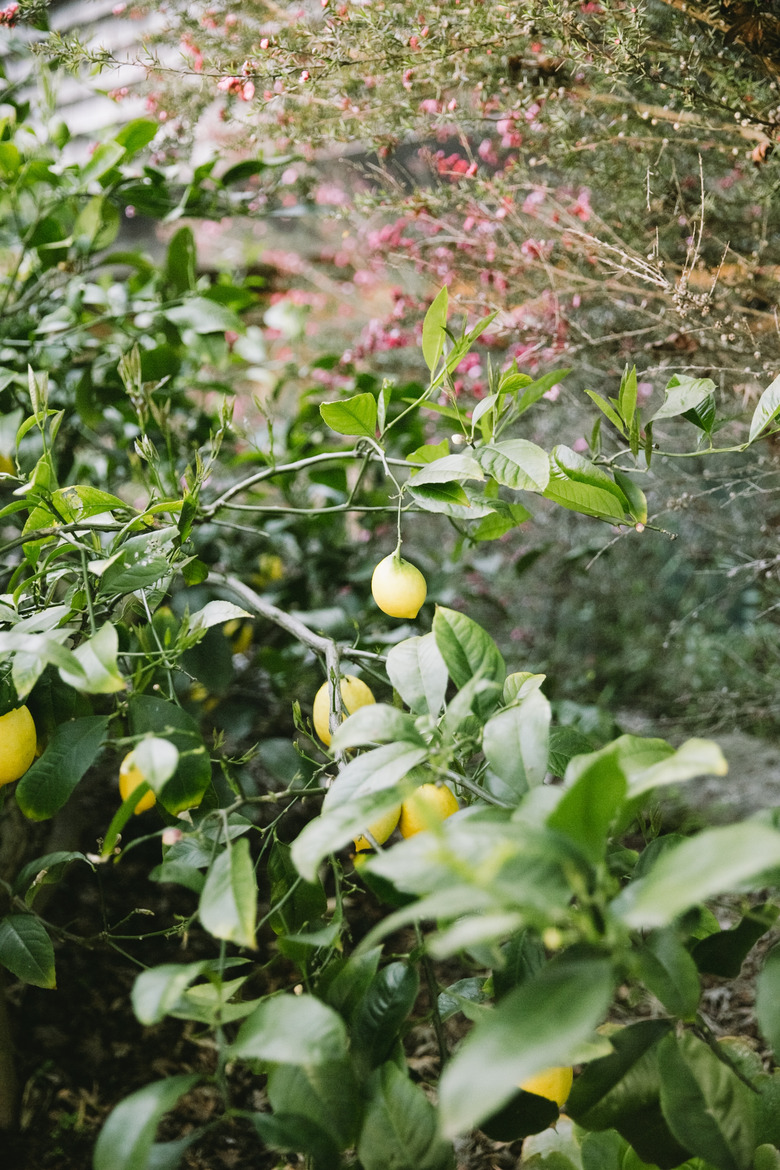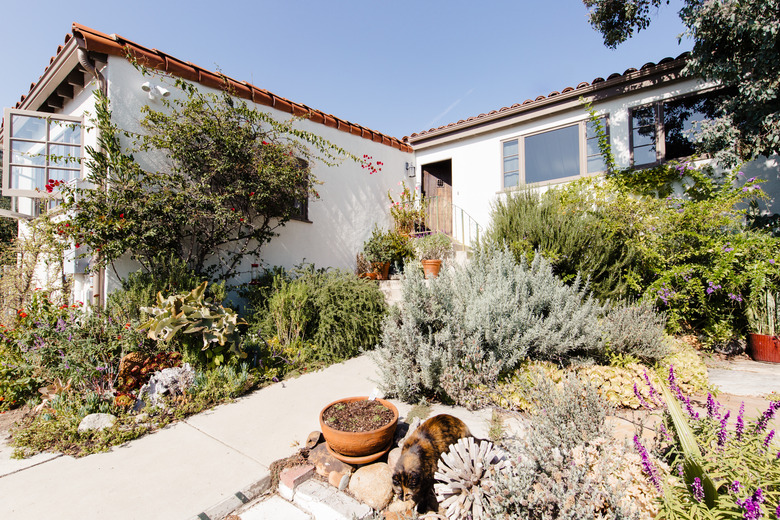Scented Leaves Are THE New Way To Create A Heady Fragrance Garden
Roses are red and violets blue, goes the old jingle, and both types of flowers smell wonderfully sweet. But blossoms aren't the only part of a plant with a great scent. Leaves have a delightful fragrance as well, thanks to the essential oils they contain, and can add a delightful dimension to your fragrance garden. Here are some of the best options to get you started.
Scented Geraniums/Pelargoniums
Your grandmother probably called these plants scented geraniums (or just "scenteds"), but today they are more often known by the genus name: pelargonium (Pelargonium spp.). These plants lack the large, scented blossoms regular geraniums offer, but their amazingly fragrant leaves give them star power in the garden.
There are over 140 varieties of scented-leaf pelargoniums available in commerce. You'll find pelargoniums with delectable leaf scents like rose, lime, lemon, apricot, coconut, lavender, oak, peppermint, nutmeg, strawberry, and ginger. Position the plants somewhere in your garden where you can touch or brush against them to release the fragrance.
Pelargoniums are so easy to care for as long as you give them sun and well-drained soil. These are dry-land plants, so you must allow the soil to dry out well between watering. If you love your pelargoniums and want more: the cuttings root easily in potting soil.
Herbs like Rosemary and Thyme
Most herbs have aromatic leaves including popular choices like rosemary and thyme. The narrow, evergreen leaves of rosemary (Rosmarinus angustifolia) are highly scented with the familiar rosemary fragrance, and the indigo flowers attract bees.
Thyme (Thymus spp__.) is also aromatic. The creeping variety is great as a ground cover, since it releases its pungent scent every time someone walks on it. Both of these plants grow in Mediterranean climates and require full sun and well-draining soil to thrive.
Other herb foliage that works well in a fragrance garden includes sweet woodruff (Gallium odoratum) and sweet bay (Laurus nobilis). Sweet woodruff is a small plant that can be used as ground cover, with its whorled leaves and starry flowers. The fragrance of its foliage is even more powerful when the leaves are dried. Sweet bay, on the other hand, grows to 30 feet tall if left untrimmed. It can be shaped into topiary and its aromatic leaves are used in curries.
Lemon-Scented Plants
The smell of a lemon tree in bloom fills the entire garden area with an intoxicating fragrance while essential oils in the fruit and leaves impart that fresh, lemony smell. If you can't or don't grow lemon trees, you can still get a lemon fix from the garden. Quite a few plants have foliage containing the same chemical compounds that produce that citrus fragrance. Here are three low-maintenance plants to try:
- Lemon verbena (Aloysia triphylla)_ _is a deciduous shrub that grows in USDA zones 8 to 10. The leaves carry a strong lemon scent even when they are dried. Plant it in a site with sun and well-draining soil.
- Lemon balm (Melissa officinalis) is in the mint family and spreads so readily that you may want to grow it in a container. Hardy in most of the country, USDA zones 4 to 9, its leaves have an intense lemon scent and sweet lemon flavor. These plants grow up to 2 feet, with wrinkled leaves and tiny lavender flowers.
- Lemon catmint (Nepeta cataria 'Citriodora') is a cultivar with lemon-scented, silver-gray leaves that grows to 3 feet. Plant it in full sun in USDA zones 3 to 9. The lemon fragrance is strong and the plant can be used for tea.
'Hot Lips' Salvia
Most sage plants (Salvia spp.) have aromatic foliage, but the cultivar "Hot Lips" (Salvia Salvia x jamensis 'Hot Lips') is particularly fragrant and attractive. It's a compact bush with foliage the smells like blackcurrants, but also offers open-mouthed, white and red flowers that keep on coming all summer long.
No plants are easier to establish and maintain than salvia. Plant "Hot Lips" in full sun in well-drained soil and watch it go. You'll have to cut it back regularly if you want it to stay in a corner, but as far as the bees and hummingbirds are concerned, the more "Hot Lips" flowers the better.
English Lavender
English lavender (Lavandula angustifolia) is a crossover plant, offering both sweet-smelling flowers and fragrant foliage. Plant lavender along a narrow pathway where you will brush its narrow evergreen leaves as you pass. This releases the intense aroma. Lavender thrives in USDA zones 5 through 8 in full sun and sandy, well-draining, slightly alkaline soil. Mature plants are drought tolerant and don't like too much water.
Lantana
Lantana (Lantana camara) is a tough-as-nails native perennial that gardeners admire for the long-lasting flower clusters. The plants are also known for the citrusy smell of the leaves when crushed or brushed. It is a clean and fresh scent but powerful to the point of being intoxicating.
Lantana thrives outdoors in the warm-to-hot regions, USDA zones 6 through 11. Plant it in a full sun location in well-draining soil and provide moderate water. If you live in a cooler area, install the plant in a hanging basket. In fact, it's not a bad idea to hang it in a basket no matter where you live, since the species is highly invasive.



